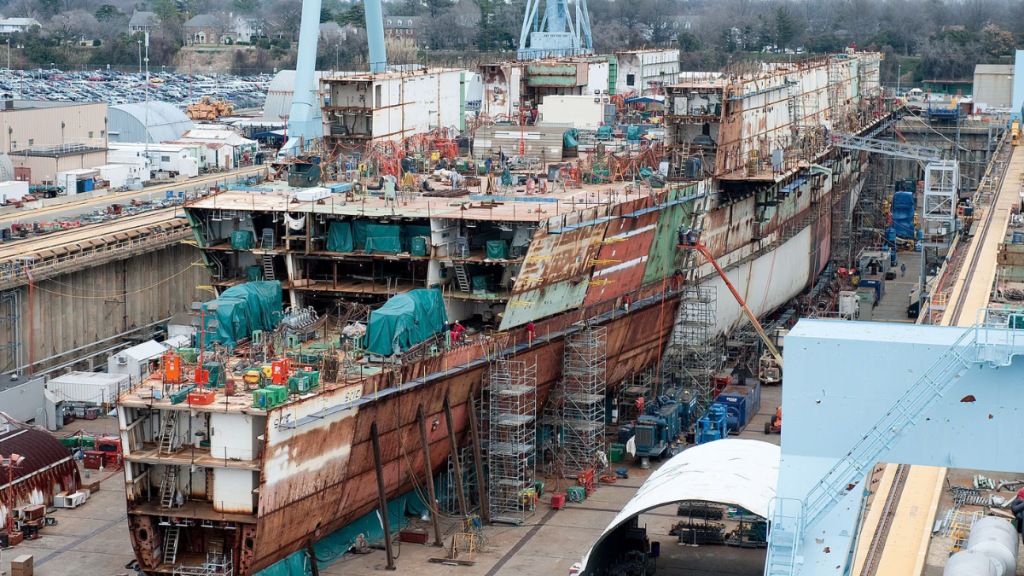India’s shipbuilding legacy dates back millennia, epitomised by the ancient dockyard at Lothal during the Harappan civilisation and traditional dhow-building along Gujarat’s coastline. Centuries later, Bombay’s shipyards in the 19th century produced vessels that traversed global oceans. This rich heritage laid the foundation for modern naval aspirations, combining cultural pride with strategic necessity.
In the words of Admiral Karambir Singh, former Chief of the Naval Staff, “The strength of any nation’s navy lies not only in its ships but in its ability to build them.” This statement reflects the cornerstone of India’s transition from a “Buyer’s Navy” to a “Builder’s Navy” and now a “Designer’s Navy.” It’s a journey of strategic importance that highlights India’s commitment to achieving self-reliance in defence manufacturing, particularly in the maritime domain.
The commissioning of INS Nilgiri in 1972 marked a turning point in India’s modern naval history. Built by Mazagon Dock (MDL) with technical support from the UK’s Yarrow Shipyard, this Leander-class frigate symbolised India’s first steps toward indigenisation. Today, India’s naval shipbuilding has evolved from assembling foreign designs to crafting sophisticated indigenous platforms.
Strategic Autonomy Through Indigenisation
India’s naval shipbuilding capabilities are now critical to its defence strategy. The development of nuclear ballistic missile submarines such as INS Arighat and the soon-to-be-commissioned INS Aridhaman exemplifies this progress. These platforms are pivotal to India’s nuclear deterrence strategy, providing a sea-based second-strike capability crucial for regional security.
INS Aridhaman is a technological marvel in the making, reportedly to be equipped with stealth features and K-4 ballistic missiles capable of ranges exceeding 3,000 kilometres. Such assets enhance India’s strategic posture in the Indo-Pacific and signal its ability to achieve parity with global powers in critical defence technologies.
The Engine of Innovation: Indigenous Design and Technology
India’s transformation into a naval powerhouse owes much to its institutions like the Directorate of Naval Design (DND) and the Weapons and Systems Engineering Establishment (WESEE). These entities have pioneered cutting-edge platforms, enabling the Navy to move beyond dependency on foreign technology.
Notable Indigenous advancements include the HUMSA-NG sonar system for enhanced underwater capabilities and the Rukmani satellite communication system for secure, wide-ranging connectivity. Partnerships with public-sector giants like Bharat Electronics (BEL) and private players such as Larsen & Toubro and Tata Group have propelled innovation, creating a robust ecosystem of defence manufacturing.
Challenges in Achieving Full Autonomy
Despite significant progress, India’s naval shipbuilding industry faces hurdles. High-end technologies, such as advanced submarine reactors and missile guidance systems, often require external collaboration. Financial constraints further complicate the development of costly platforms like nuclear-powered submarines and aircraft carriers.
To address these issues, the Indian Navy has adopted a long-term strategy. Its 15-year Indigenisation Plan and 20-year Science and Technology Roadmap focus on aligning procurement with domestic manufacturing capabilities. By emphasising the “Buy and Make in India” model, the Navy aims to bridge technological gaps and enhance operational readiness.
Economic Benefits and Export Potential
The naval shipbuilding sector also contributes significantly to India’s economy. Projects like the Advanced Technology Vessel (ATV) programme have generated employment, fostered skill development, and driven local industrial growth.
India is increasingly positioning itself as a defence exporter, with platforms like the Scorpene-class submarines attracting global interest. Achieving 100% indigenous warships would solidify India’s reputation as a reliable defence partner and boost economic growth and geopolitical influence.
Comparing Global Capabilities
India’s nuclear deterrent fleet, though smaller than those of the U.S., China, and Russia, is tailored to regional requirements. Submarines like INS Arighat and INS Aridhaman are crucial in maintaining strategic stability in the Indo-Pacific, countering an assertive China.
While China’s Jin-class SSBNs equipped with JL-3 missiles offer greater range, India’s diversified deterrence strategy—spanning land, air, and sea—ensures resilience and adaptability in its defence posture.
The Path Forward: A Self-Reliant Vision
Looking ahead, India prioritises developing advanced SSBNs, next-generation hunter-killer submarines, and Air Independent Propulsion (AIP) technology. These initiatives reflect a broader commitment to achieving global standards in naval warfare capabilities.
Prime Minister Narendra Modi’s emphasis on “Swavlamban” (self-reliance) aligns seamlessly with the Navy’s objectives. Public-private partnerships, streamlined procurement processes, and a focus on Indigenous design drive India toward building a fully self-reliant naval force.
An Industry Anchored in Progress
As India gears towards Navy Week, its “Builder’s Navy” represents more than technological advancements—it symbolises strategic autonomy, economic vitality, and national pride. The naval shipbuilding industry secures India’s maritime future and positions the country as a responsible regional power and an emerging global defence leader.

